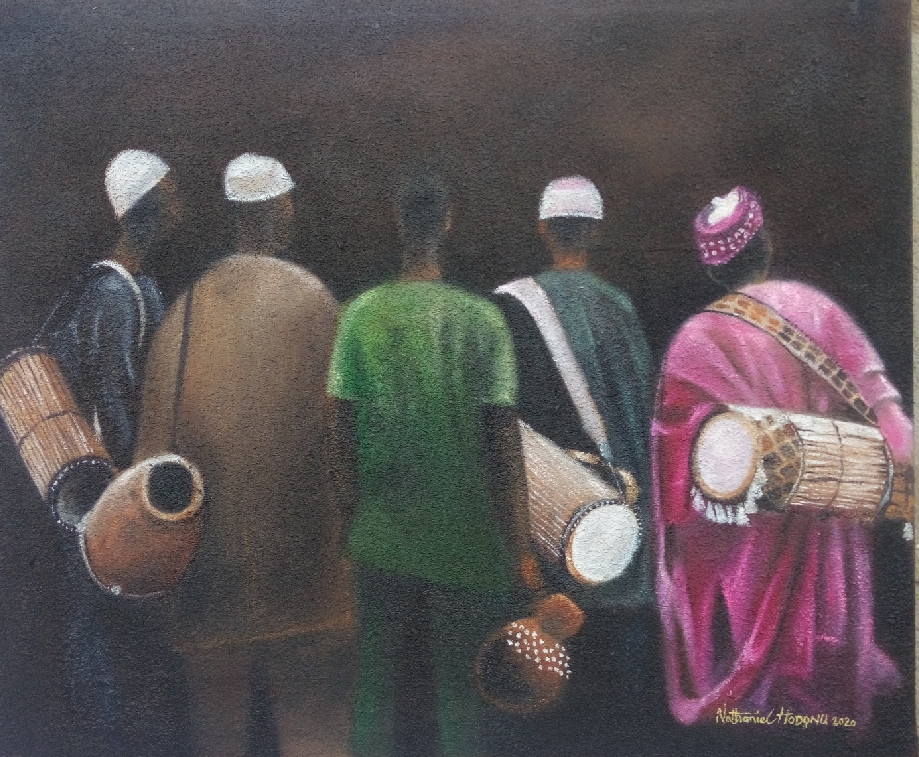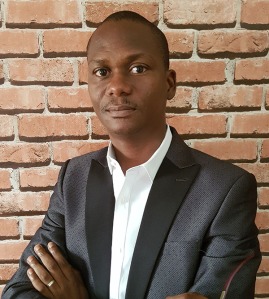‘The Life and Times of Imran’: History through the lens of family narrative
By Anote Ajeluorou

FAMILY memoir is a veritable tool for memory-keeping that is not a well-developed art in our part of the world. Beyond the maternal and paternal grandpa and grandma, most people hardly know who their great grandpa and grandma were. Some times, it’s wilful; some other times, it’s because the conversation never goes beyond the grandpa and grandma. Or there are simply no records. But a family memoir like Bayo Adeola’s The Life and Times of Imran: A Family in a Nation’s History (Quramo Publishing Ltd, Lagos; 2022) does much more. Its aim to preserve a generational tree beyond the grandpa and grandma. It even traces what may be termed a country’s ‘great grandpa’, a category in reaching back to the pre-history of a country’s existence, through the turbulence of painful history, to the modern times. This is what Adeola’s The Life and Times of Imran has admirably done, the preservation of a family tree that reaches back in time, and in so doing also traces the socio-political, cultural, religious and economic indices that shaped this notable family and its interconnectedness to the society into which it is weaned.
Beginning with what almost feels like fictional dialogue between a son and his grand mother, The Life and Times of Imran soon takesa detour to a family narrative. Indeed, the dramatic opening of a son who is woe-begotten and is threatening to leave home on account of an impending imposition of two wives on his young shoulder when he could barely take care of himself with his meagre earning is aptly entertaining. Ironically, what he threatens to leave home for (being saddled with two wives) would eventually be what he eagerly embraces as the years wear on (marriage to four wives)!
Adeola is unpretentious about the man he is writing about which further elicits curiosity about the man who would turn out to be an enigma in his own right as the narrative progresses:
“Imran (Adisa Olatunbosun Sanusi Adeola) was not a hero in life. He was not a prince… He was a simple, ordinary, everyday person who struggled through a simple, ordinary, everyday life. The primary focus of his adult life were two. The first was to take care of his parents and siblings, nephews and nieces as best as he could. The second was to educate his children. In both, he was a family man. He was able to accomplish these objectives to the best of his abilities, but not without difficulties, like most simple, ordinary, everyday people. He did this through strong work ethics, great personal sacrifice of comfort, and intense and consistent prayer.”
But here perhaps is where Adeola misreads history. Heroes are not only kings or princes, as the famous American dramatist makes us to understand, but ordinary folks doing extraordinary things. His father Imran would be just such folk hero in his own right.
So how did a man who was born at the turn of the 20th century on May 17, 1917 come to elicit the writing of a 618-page book? The taste of the pudding, or indeed amala and ewedu, is in the eating, as it were. Indeed, a man born in 1917 who also had a level of education, primary, or elementary as it was called then at Holy Trinity Primary School, Ikereku, Abeokuta in 1932, who was among the earliest to be employed in a multinational company like John Holt and later became a banker and lived to be almost 90 years surely has something unique to offer and a proper subject fit for memorialisation and investigation. A job opening in John Holt made his father, Sanusi Lawani Madinuori Adeola, to withdraw him from attending Methodist Boys High School, Lagos, just before settling into school. What became of his life after this aborted secondary school life and through the years? What trajectory did his life undergo all through the colonial era, the upheavals of World War II and then to Nigeria’s independence and beyond? What specific mark did he make on his society and how is he being remembered by today? These are elements of curiosity Adeola creates and resolves in his epic narrative. But also importantly, he backgrounds the life of his illustrious father with apt historical events even though Imran did not take part in them specifically. But these events give a sense of the times and the social and political ferments that signpost the periods.
For a book that is family history, this historic writing, a blend of family folk narrative and national and world historical saga, is of immense value. For a country where the teaching of history is long forgotten, this is a huge plus, as conditions that existed before Nigeria was formed, its formation, its evolution up until independence and the historical trajectory and turmoil of self-rule are all documented in Adeola’s The Life and Times of Imran.
Against the backdrop of Imran’s birth and how his family came to live in Abeokuta, Adeola gives an elaborate historical evolution of the city on a rock. This is also to establish why Imran is of Egba heritage and not any other among the Yoruba in the area. The author affords us a glimpse of slave trade at its dying moments when it had been abolished, the continuing threats of it in the surrounding country, the invasion of Abeokuta by the dreaded Dahomian army and how they were repelled, the arrival of the first white missionary, Henry Townsend and later Ajayi Crowder who propagated Christianity and established the elementary school that afforded Imran early education that would place him on a certain pedestal in life. Adeola also revved up the Yoruba wars in the late 19th century – the Jihad, Kiriji Wars, Ibadan Wars, the Parapo Wars – and the establishment of Abeokuta by their illustrious ancestor, Lisabi who resisted Ibadan advance on it and maintained its autonomy. And how the British, eager for trade advantages, would step into these tribal wars to end them for the smooth flow of trade.
After Imran went to complain to his grandmother (he’d lost his own mother when he was three years old and was brought up by his maternal grandmother) in Abeokuta, threatening to leave home on account of impending early marriage being forced on him, a pius Muslim, he got answers to his prayer. An opening in Ibadan branch of John Holt became his saving grace. He jumped at it and soon leaves home. But marriage is not something a man runs away from. Ultimately, it catches up with him. But his wages had improved considerably by this time and he could afford a wife and still take care of his parents and siblings.
A man not given to talking too much about his past, Adeola believes his Imran must have relocated from Ibadan to Lagos in 1953, and settled in 42 Kosoko Street, Lagos Island, with his two wives and four children to work with SCOA after his stint with John Holt in Ibadan. 13 other children would arrive subsequently to add to the bursting home of a resourceful Imran. Adeola is a master of historical foregrounding, a feature that stands The Life and Times of Imran out and makes it a unique read. It’s one of the reasons why the life of an ‘ordinary’ and ‘simple’ man, as he describes his father, leaps out of a drab environment and deservedly attracts the tome he has written about him. Indeed also, Imran is Adeola’s plausible excuse to recreate the historical ambience that shaped his father’s life from the founding of his sleepy native Abeokuta town and what he achieved as a man uniquely made for the times he found himself. Aptly titled ‘Lagos’, the section that deals with Imran’s relocation from Ibadan to Lagos gives the author a handle to tease out the evolution of Lagos, as we now know it from early the European visitors and later other settlers from the world over down to the colonial era till now.
This section lays out the minutest details of the character of Lagos Island in the 1950s, the developments that took place with the colonial masters, the mix of people that made it up and its unique character as a melting pot that it has become famous for over the years till now. Adeola explores all these with an intimate gaze that affords his readers opportunity to peep into the underbelly of the evolutionary journey of Lagos down the ages as much as that of the man at the centre of it all, Imran. After a few years, Imran, with his family growing beyond the small apartment on Kosoko Street, would build himself a one-storey house on 13B Agege Motor Road, Mushin, the newly developing outskirts of Lagos Island where he would raise his growing family admirably through the vagaries of Lagos life.
The Life and Times of Imran as a narrative is also tangential upon the lives of other prominent men who gave both Lagos and Nigeria their unique characters. Abeokuta, as one of the earliest towns to have contact with Christianity, some of its the town’s sons and daughters took advantage of the missionary schools the churches established. Lagos was the thriving industrial and commercial city at the time; these educated men and women would easily relocate to Lagos and so began to define the economic and social landscape. Two of such men who were Imran’s cousins were Chief A.S.O. Alabi, also known as Lord Rumens, who had a towering influence on the real estate business in the Ikoyi axis of the city. The second cousin was the famous UN diplomat, Simeon Olaosebikan Adebo, who was to provide accommodation for Imran at his aborted Methodist Boys High School quest.
However, Imran’s 17 children provide a character study in the social and economic life of Lagos and Nigeria. Perhaps, the most influential is Imran’s fifth child, Taju (Fola) Adeola, who would co-found and be the first Managing Director of Guaranty Trist Bank (GTB) Plc, a bank that revolutionised and redefine banking business in the country. Others were also eminent professionals in their own right in leading sectors, including insurance, law, civil service, medical practice, finance, travel and retail businesses, among several others.
A very prolific man, by the time Imran died in 2006 after relocating back to Abeokuta in 1996, he still had teenage children when the older ones were already in their 60s! His grandchildren and great grandchildren would be 61 and 26 respectively at the time of completing this book,
One feature that stands out in Imran’s life is his devotion to his Allah through his consistent prayers. And whenever he is confronted with any family or work challenge, his famous quip was: Where do I stand? And he would then turn to his Allah in prayer for direction and the challenge would be resolved one way or the other in his favour. And as Adeola records:
“The activity that gave Imran the greatest satisfaction was his devotional prayers. He was a prayerful person throughout his life. We would recall his earliest commitment to prayers when he was dissatisfied with his conditions in Abeokuta as a young man and prayed to be removed from the town. From that point on, he believed in the efficacy of prayers and fully committed to it. While he worked in Ibadan and Lagos, he was known among his friends for his five daily prayers and regularly reading of the Quran… When he finally retired to Abeokuta, he became even more committed to this schedule. His record showed that he had completed the reading of the Quran about 200 times in ten years, with equivalent number of Dalailu and tasbih.”
Perhaps next to his devotion to his Muslim faith was Imran’s commitment to the education of his children; this came at great personal sacrifice which would pay off with how they excelled in their endeavours later in life. Although a polygamous family fraught with its usual drama, Imran’s family managed to run smoothly such that the usual fractious and intractable divisions in most polygamous families were well managed and did not erupt to overwhelm the oneness glued the family together.
As Adeola records it, “Imran was strongly committed to the education of his children, and he sacrificed much for it. The Almighty Allah blessed the older children immensely with academic brilliance, and they all excelled in school. There was therefore no unhealthy rivalry and jealousy based on school performance. They all gained admission to secondary schools at the appropriate times and performed well. The relationship among them was close and very cordial. Friendship among them started from childhood. While all these were going on, there was still not much cordiality among the wives, but they were civil enough to each other. They must be commended for letting this unfettered friendship take root among the children, for they could have been biased enough to discourage or even forbid it. The children were not insensitive to the lack of cordiality among their mothers, but somehow they were able to live with it… The conclusion is that rivalry among the children was totally absent among Imran’s family, another grace from the Almighty Allah.”
Adeola’s The Life and Times of Imran is an important book that teases out global and national history against the backdrop of the life of one ‘simple’ and ‘ordinary’ man who would be a giant in his own right. Through Imran’s eyes, as it were, readers are invited to inhabit a special space in an unfolding personal ancestral drama. From Imran’s ancestry steeped in pre-history in the disparate villages that came together to make up Abeokuta at the dying embers of the Trans-Atlantic Slave Trade, Abeokuta town on warpath with Dahomey Amazons, the internecine wars in Yorubaland, the arrival of Europeans missionaries and administrators, World Wars I and II, colonial rule and nationalism politics of the 1940s and 1950s till Nigeria’s Independence in 1960, the short but tumultuous life of the First Republic, its principal actors and their political battles for supremacy, the Nigeria Civil War, how Imran’s first daughter was caught up in it and stranded in Port Harcourt, Yakubu Gowon’s 9-year rule, the coup that ousted him, return to civil rule, its premature death, and successive military rule. This is the epical narrative dimension of The Life and Times of Imran through to the of death of the Adeola patriarch and book’s principal character in 2006.
Indeed, Adeola has produced a prodigious and memorable book for all time to memorialise his father, Imran. He could be forgiven for reverting to ‘Popsy’ colloquial usage instead of ‘Father’ or simply retaining consistent with ‘Imran’ all through. The Life and Times of Imran fills a great historical and sociological void. This is a book to own.



